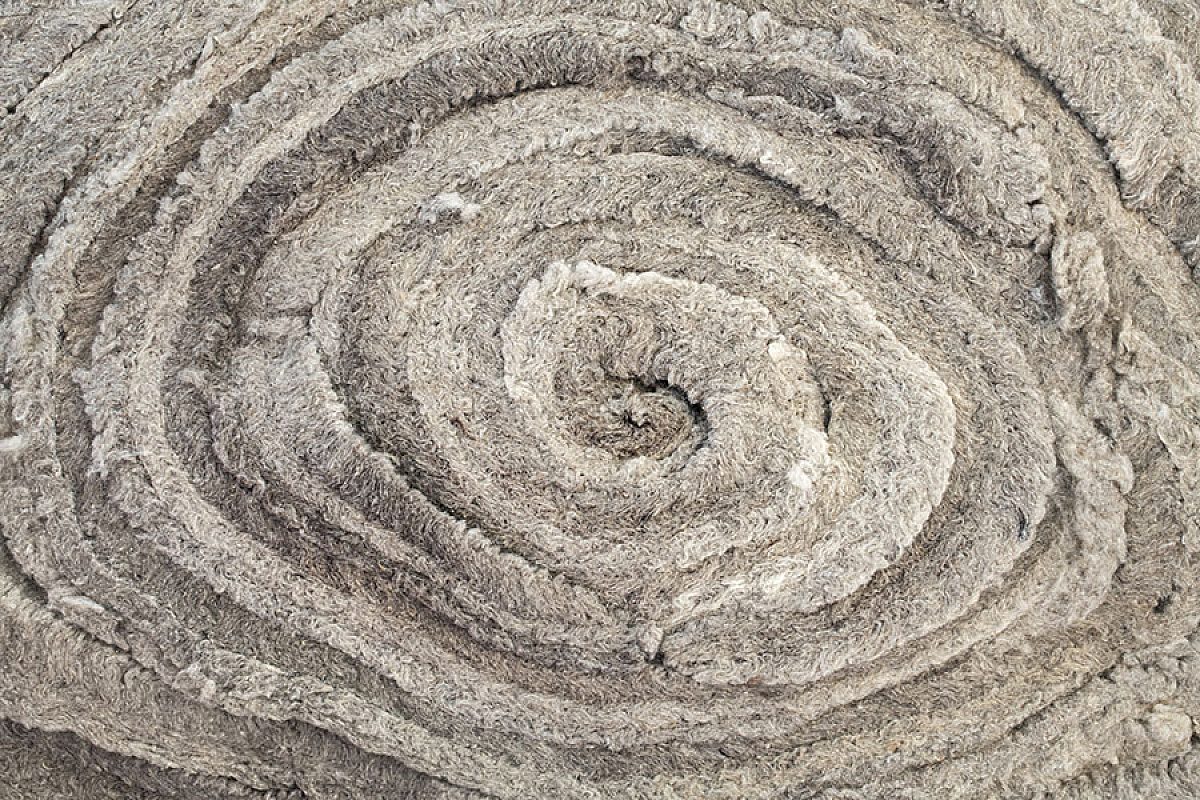Sheep are able to stay warm in the winter and cool in the summer because of the particular nature of their woolen coats. The crimped wool fibers form millions of small pockets that trap air and create a thermal barrier between the animal and its surroundings. Wool is an excellent insulation material not just for sheep but for human bodies and our living spaces. Another advantage of using sheep’s wool as a natural alternative to more common and conventional insulation materials is that wool fibers actually purify the air by neutralizing toxics such as nitrogen dioxide, sulphur dioxide and formaldehydes. Furthermore, wool insulation is ideal for spaces that may encounter high levels of moisture such as condensation as it naturally absorbs up to 33% of its own weight in moisture without losing its ability to insulate. Finally, sheep’s wool is a self-extinguishing material or a natural flame retardant. Due to it’s high nitrogen content, wool will not burn at temperatures below 560 degrees celsius. More common insulators are not naturally flame retardant and employ toxic chemicals to make them resistant to flame.

The street-level window display at Parsons features a collaborative project between the Healthy Materials Lab and the Woolmark Company www.woolmark.com to demonstrate the incredible attributes of wool as a building material. The Woolmark Company is a not-for-profit organization that conducts research, development, and marketing on behalf of 60,000 Australian woolgrowers http://bit.ly/2qIac6P. They provided the Healthy Materials Lab with fifty rolls of 5.25 by 22.5 inches thick and 12 feet long rolls of Black Mountain (hyperlink to company) Sheep wool insulation for the display in order to raise awareness in the design world about the uses of wool as a healthy and natural alternative to synthetic building materials.
Each of the five windows has an informational blackboard at its base with facts about wool and its many benefits. For example: “Wool reduces air toxicity by absorbing harmful chemicals from the air.” Or, “Wool is biodegradable at the end of its life.” Adjacent to the words are pictures of herds of beautiful sheep freely roaming a blue-skied expanse of Australian countryside. In the third window there is a close up photo of four sheep walking in the sun and it’s impossible not to notice the thick wool that seems to gather into heavy lobes all along the front of their bodies. Behind the text and the photo is the wool insulation itself, piled fold upon fold in so natural a way it mimics the sheep’s own growth pattern from the photos.

The design research team decided to leave the insulation relatively unaltered and highlight its natural qualities. Each of the 12-foot long sections is a slightly different color as it is the natural color of wool - without any added dyes. For the first and fifth window they created a giant spiral out of the insulation by laying down eleven of the 12-foot long sections, rolling them together and then sewing the entire roll with rope to keep it from falling apart. The designers placed the flat side of the roll up against the window and left a small amount of empty space. The flat, grey wool against the glass and the light behind it coming through the gaps creates a captivating image and warrants taking a much closer look. The second and fourth windows consist of 9 pieces of 12-foot sections stacked in a strata formation. The third and central window is slightly different. It consists of 10 12-foot sections and the insulation is stacked more horizontally and layered like lobes of a brain. There are gaps between some of the piles that let the light come through.
Apart from the purposefully placed gaps in the layers of insulation, the thick wool generally blocks all the light behind it, allowing the action from the street to be reflected in its folds and spirals. It is an apt representation of the goals of the Healthy Materials Lab. The materials around us are very much a part of our bodies. It’s a meaningful symbol to look at a building material and see yourself reflected back.
Read More
Join Our Academic Network
Get Access to our carefully researched and curated academic resources, including model syllabi and webinars. An email from an academic institution or a .edu email address is required. If your academic institution does not use .edu email addresses but you would like to join the network, please contact healthymaterialslab@newschool.edu.
Already have an account? Log in